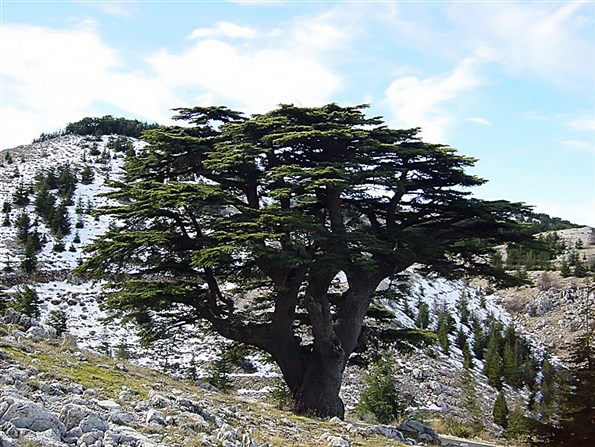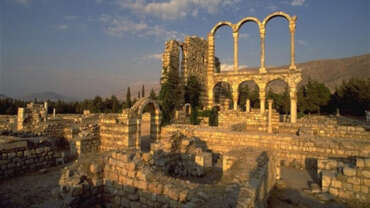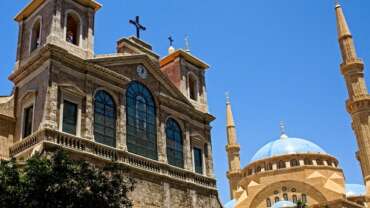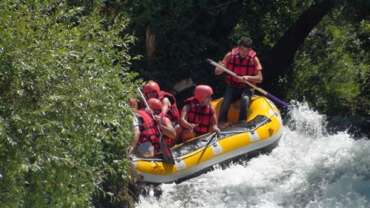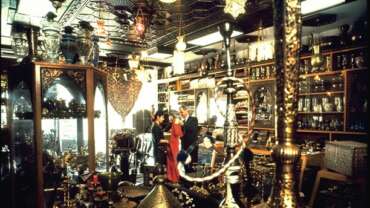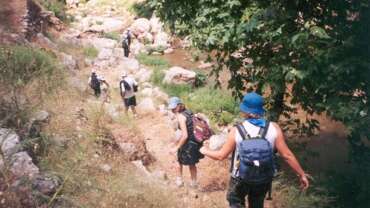The 4 Seasons for Lebanon
Winters
From the snow-covered mountains to the warm Mediterranean coast, Lebanon’s winter is a season of contrasts.
From the warm Mediterranean coast to the snow-covered mountains, winter (December-March) presents visitors to Lebanon with a host of contrasts. Winter along the coast is a mild affair, characterized by warm days and cool evenings, with temperatures ranging from 10-20°C (50-67°F). As such, it is a wonderful time to visit the many historical and cultural attractions along the coast, including the ancient cities of Jbeil (Byblos), Saida (Sidon), and Sour (Tyre). Not only will you avoid the crowds, but you may actually find yourself as the solitary visitor to these ancient ruins.
The real draw during the winter, however, is Lebanon’s winter sports. With six ski resorts catering to skiers and snowboarders of all skill levels, and kilometers of backcountry cross-country and snowshoe trails waiting to be explored, Lebanon has something for everyone. Winter is the rainy season in Lebanon, which translates into plenty of powder at the higher elevations where temperatures range from -5-5°C (25-40°F). If timed correctly, a visit during the tail end of the ski season affords visitors the opportunity to ski in the morning and take a relaxing swim in the Mediterranean in the afternoon.
The country’s famous nightlife, entertainment, and shopping do not slow down during the winter months. There is also a popular classical music festival each February at the Al-Bustan Hotel which features renowned classical pieces and performers.
Spring
Near perfect weather and a display of colorful wildflowers! Soak up the beauty of a Mediterranean spring in Lebanon.
Springtime (April-May) is one of the most pleasant times to visit Lebanon. The near perfect weather, 0-15°C (32-60°F) in the mountains and 15-25°C (58-72°F) along the coast, makes it a great time to discover Lebanon while soaking up the beauty of a Mediterranean spring.
Lebanon’s archaeological treasures are on full display during the spring months, with snow-topped peaks in the background and bright wildflowers springing up amid the ruins. The Spring weather also makes it a fantastic time for outdoor activities. Varied terrain, scenic vistas, and historic environs combine to create unique trekking opportunities throughout the country. Particularly popular are hikes through one of the Cedar tree reserves (Al-Shouf, Horsh Ehden, Tannourine) or treks down into the majestic Qadisha Valley.
Lebanon also has great mountain biking, caving, rafting, and paragliding through spectacular mountains-to-blue-oceans landscapes. And, after a day of activities in the mountains or sightseeing on the coast, you can spend cool spring evenings sampling Lebanon’s gastronomic delights at one of the country’s many open air cafés and restaurants.
Summer
With sun, fun, mountain escapes and cultural festivals, Lebanon’s summer offers something for everyone.
Summer (June-September) in Lebanon is made for sun worshiping, beaches, mountain escapes, and cultural festivals. The clear skies and warm temperatures along the coast, 20-32°C (68-90°F), lure Lebanese and tourists alike to the waters of the Mediterranean. Here, the atmosphere is a mixture of trendy “see and be seen” and utter relaxation.
As usual, Lebanon offers tourists more than a traditional “sun and fun” vacation. When not soaking up the sun, visitors can soak up some history at a plethora of archaeological sites. For a change of pace, head to the mountains! Plenty of outdoor activities, including hiking, rafting, and mountain biking await in the cooler mountain climes of 6-22°C (45-70°F).
For arts enthusiasts, summer is when Lebanon hosts a large number of festivals, featuring both local and international performers. The largest of these festivals are held at historic and archaeological sites serving as breathtaking backdrops for performances. For example, the Baalbek Festival is hosted on the site of spectacular Roman temples; the Beiteddine Festival is held at a 200 year-old palace in the mountains of the Shouf; and the Byblos Festival takes place in one of the oldest continuously inhabited cities in the world.
The international festivals attract premier talent in a variety of performance areas, ranging from opera or jazz to renowned dance companies and famous comedians. For festivals on a smaller scale with more of a local flavor, many villages throughout the country host summer fairs or festivals.
Fall
Fall is harvest time in Lebanon, with cooler weather, fewer crowds, and scenic natural beauty.
Fall (October-November) brings cool, crisp weather that is perfect for taking in Lebanon’s rich historical treasures. Temperatures range from 5-20°C (40-68°F) in the mountains and from 15-28°C (60-85°F) on the coast. Since these months are outside the summer and winter high seasons, there will be fewer crowds and better deals on accommodations.
Leisurely explore the country’s numerous archaeological sites and historic monuments. Go on a hike in the Cedars forest or one of the nature reserves. Take a gastronomical tour of Lebanon, sampling regional specialties at the great restaurants scattered throughout the country. Don’t miss wine tasting at the vineyards in the Bekaa Valley, the citrus harvest in the South, and apple picking in the North.
Hire a small outfitter to take you on a trip along the ancient olive route to see the harvesting of the olives, learn how olive oil is pressed, and purchase Lebanese olive oil and luxurious olive oil soap.



